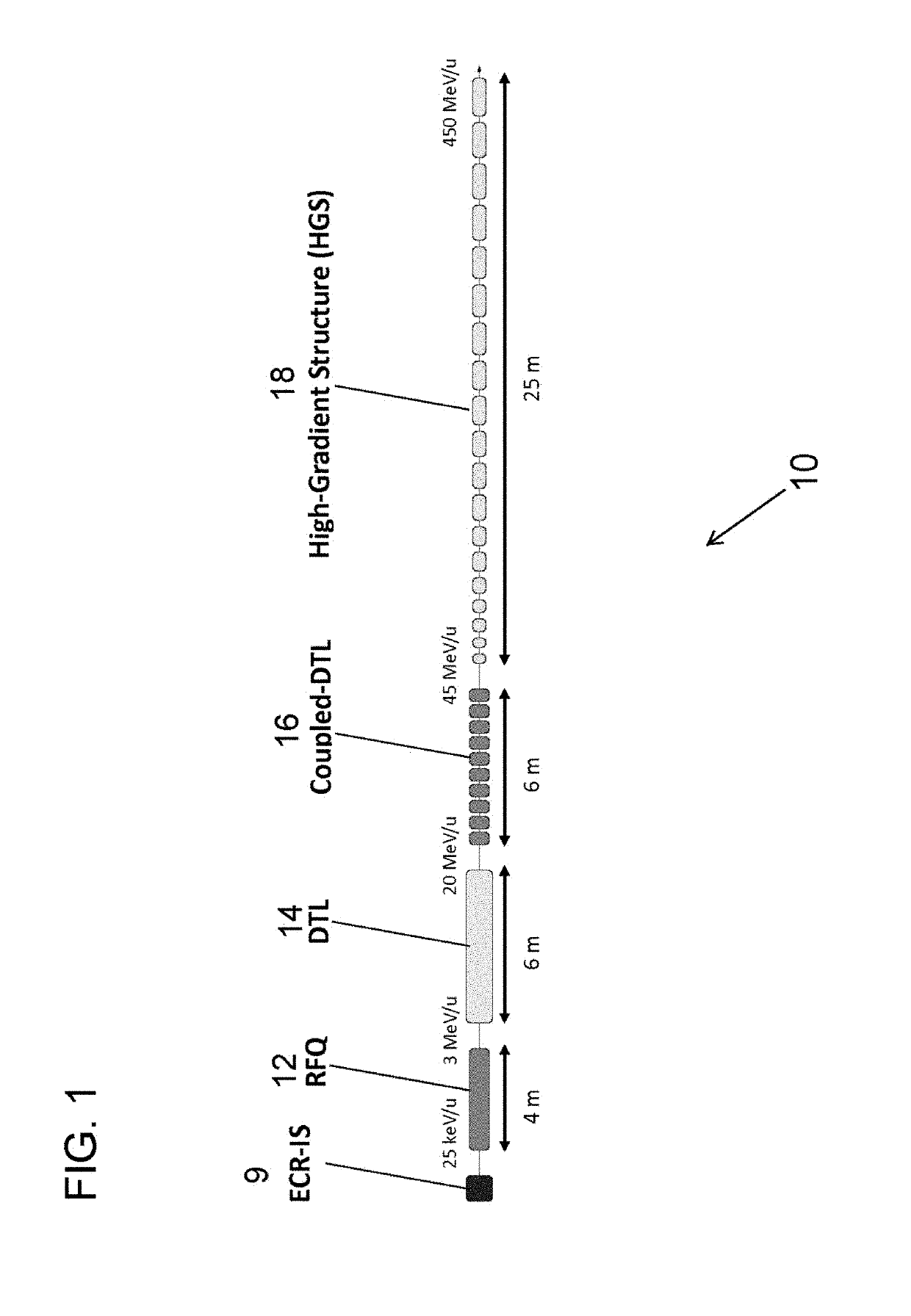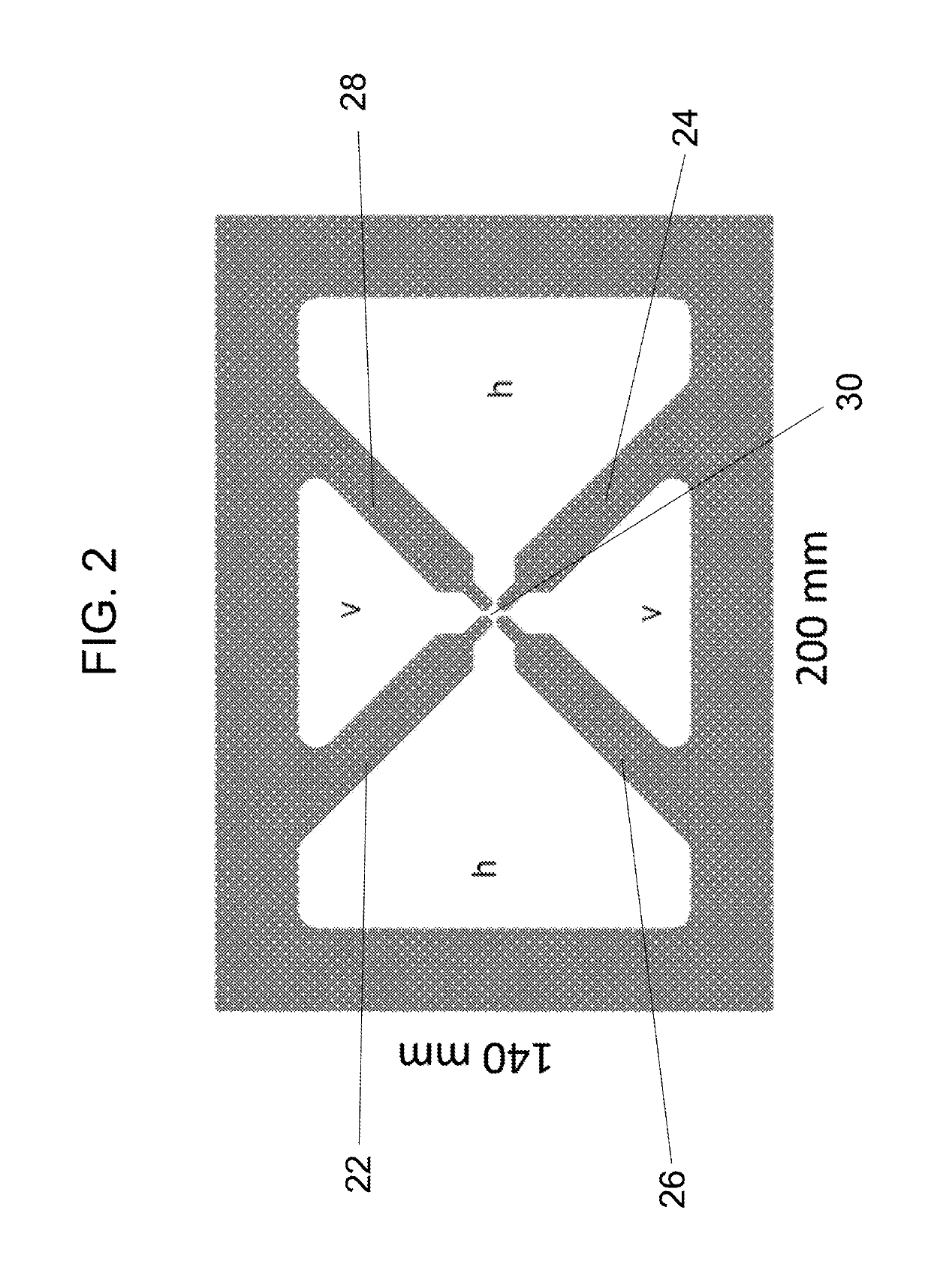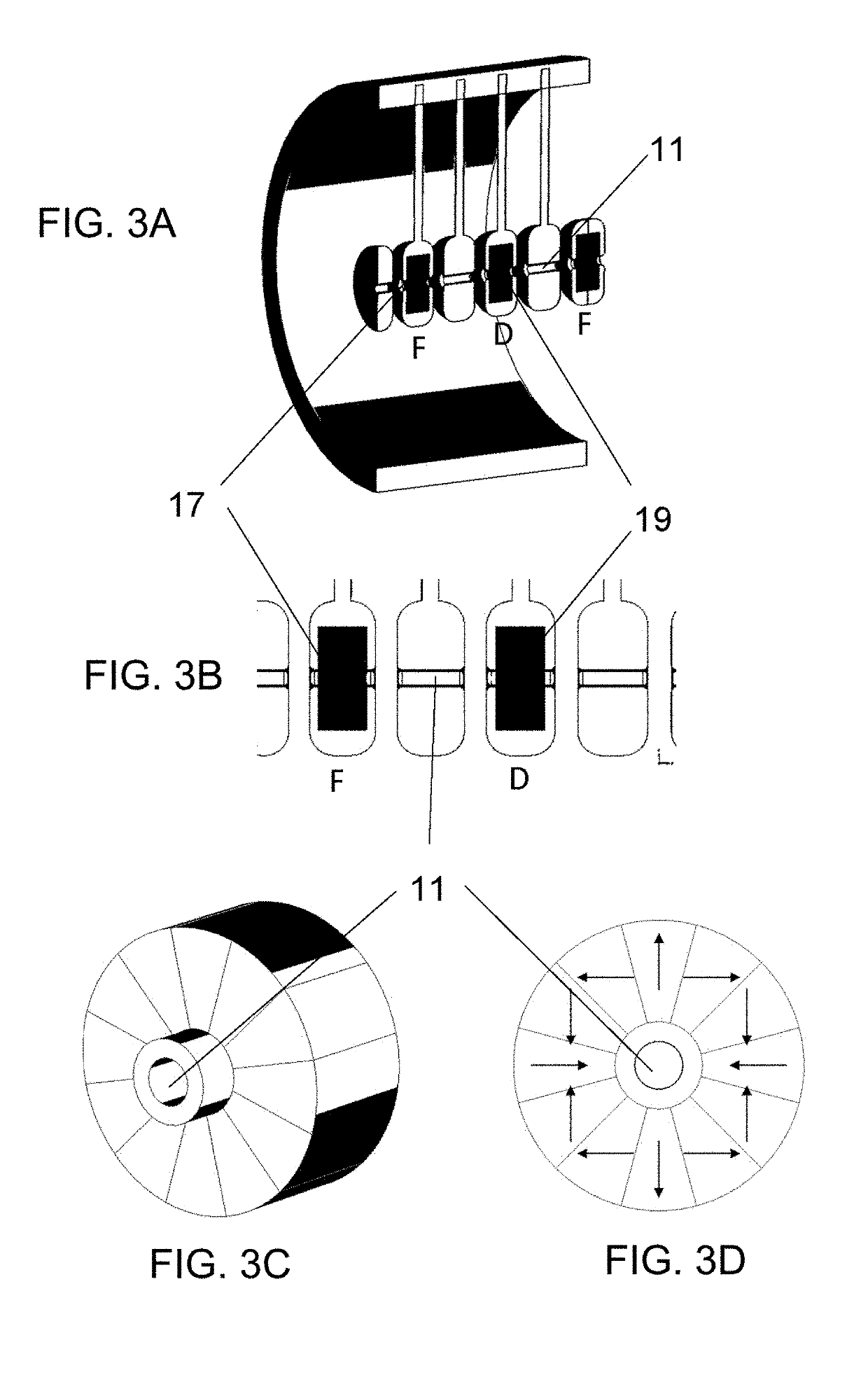Compac carbon ion LINAC
a carbon ion linac and linac technology, applied in the field of linacs, can solve the problems of not offering the flexibility of simple tuning of the time structure or the energy of the beam, and the damage of healthy parts of radiation, so as to reduce the average rf power required, the pulse length of the pulse is reduced, and the energy modulated ion beam therapy is fast.
- Summary
- Abstract
- Description
- Claims
- Application Information
AI Technical Summary
Benefits of technology
Problems solved by technology
Method used
Image
Examples
example
[0116]A compact (8×45 meters) Advanced Compact Carbon Ion Linac was developed, capable of providing 50 MV / m for particles with a beta of from about 0.3 to about 0.7. The high operating gradients are enabled by operation at high frequency (e.g., 2856 MHz), at very low duty cycle (e.g., less than 0.06 percent) and for very short (less than 0.5 microsecond) beam pulses. The duty cycle is the product of the pulse length multiplied by the repetition rate, so one may have a relatively long pulse at a very low repetition rate.
[0117]Since all ion species will have the same velocity or energy per nucleon at any given point in the linac, a specific example of the carbon beam is provided here. The results shown in FIG. 5A were obtained using the beam dynamics code TRACK, locally developed at ANL. The sequence of the beam line element as well as their appropriate voltage and current settings are used as input to the code.
[0118]The 12C5+ beam is extracted from the ion source (not shown) and inje...
PUM
 Login to View More
Login to View More Abstract
Description
Claims
Application Information
 Login to View More
Login to View More - R&D
- Intellectual Property
- Life Sciences
- Materials
- Tech Scout
- Unparalleled Data Quality
- Higher Quality Content
- 60% Fewer Hallucinations
Browse by: Latest US Patents, China's latest patents, Technical Efficacy Thesaurus, Application Domain, Technology Topic, Popular Technical Reports.
© 2025 PatSnap. All rights reserved.Legal|Privacy policy|Modern Slavery Act Transparency Statement|Sitemap|About US| Contact US: help@patsnap.com



